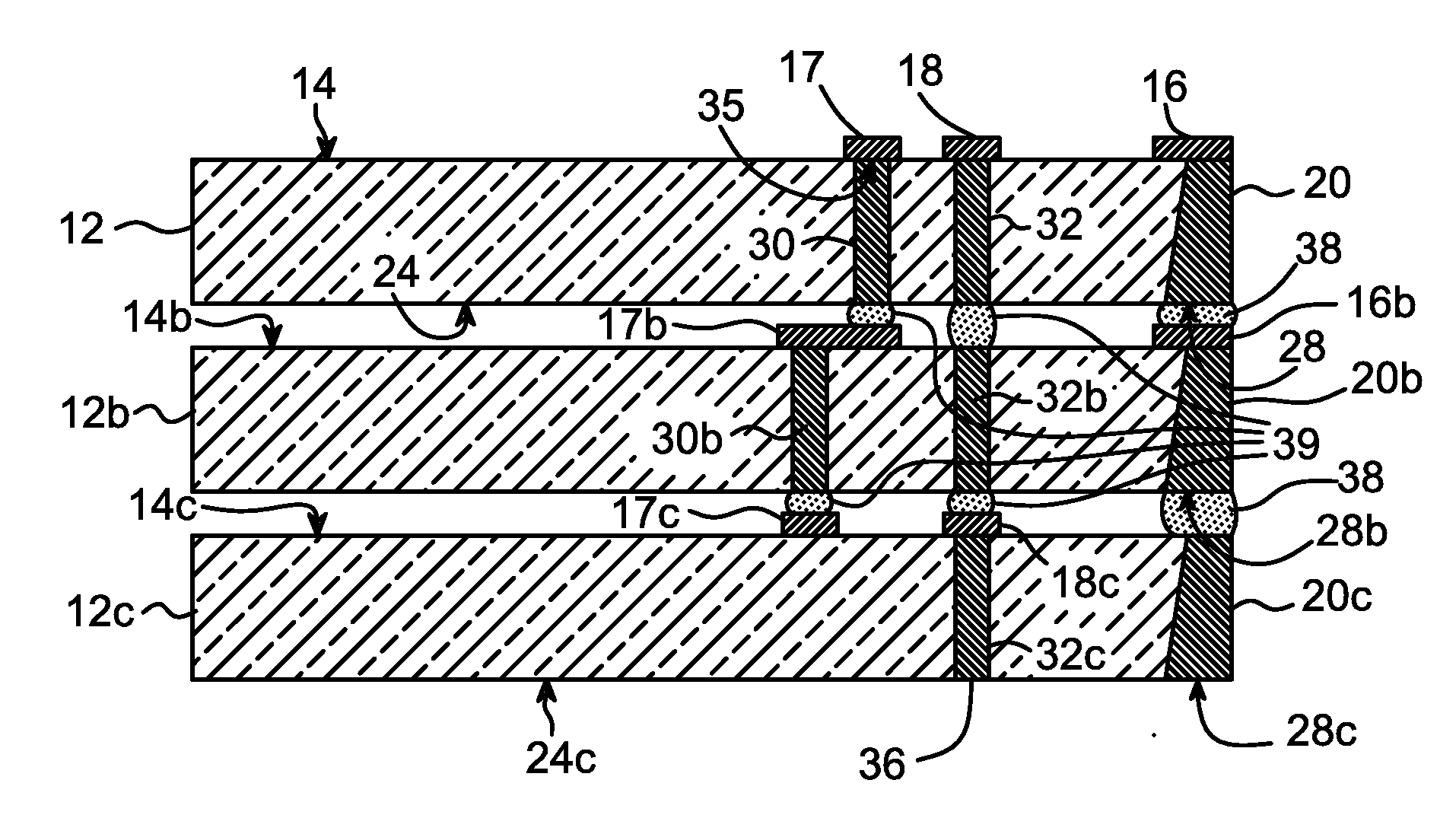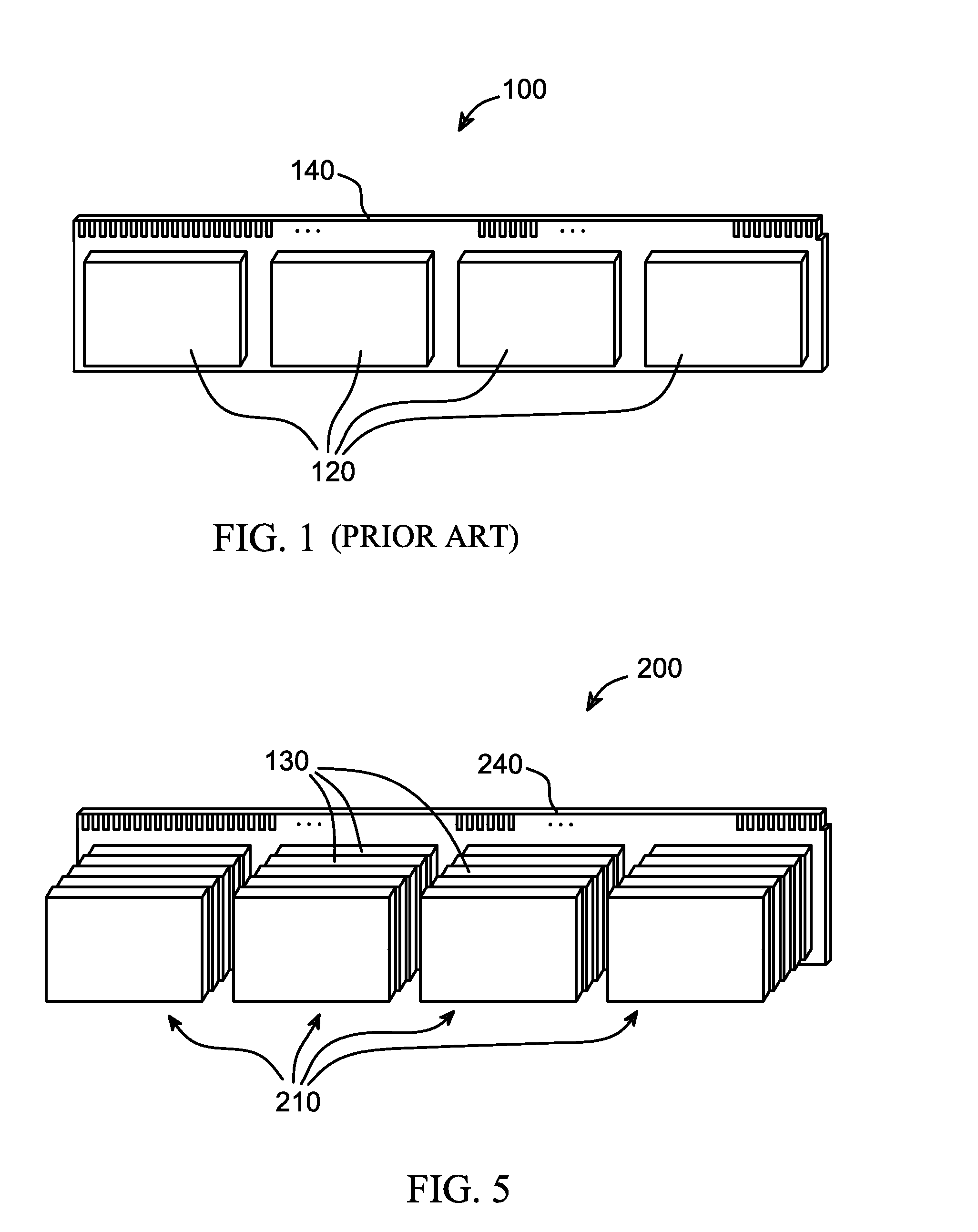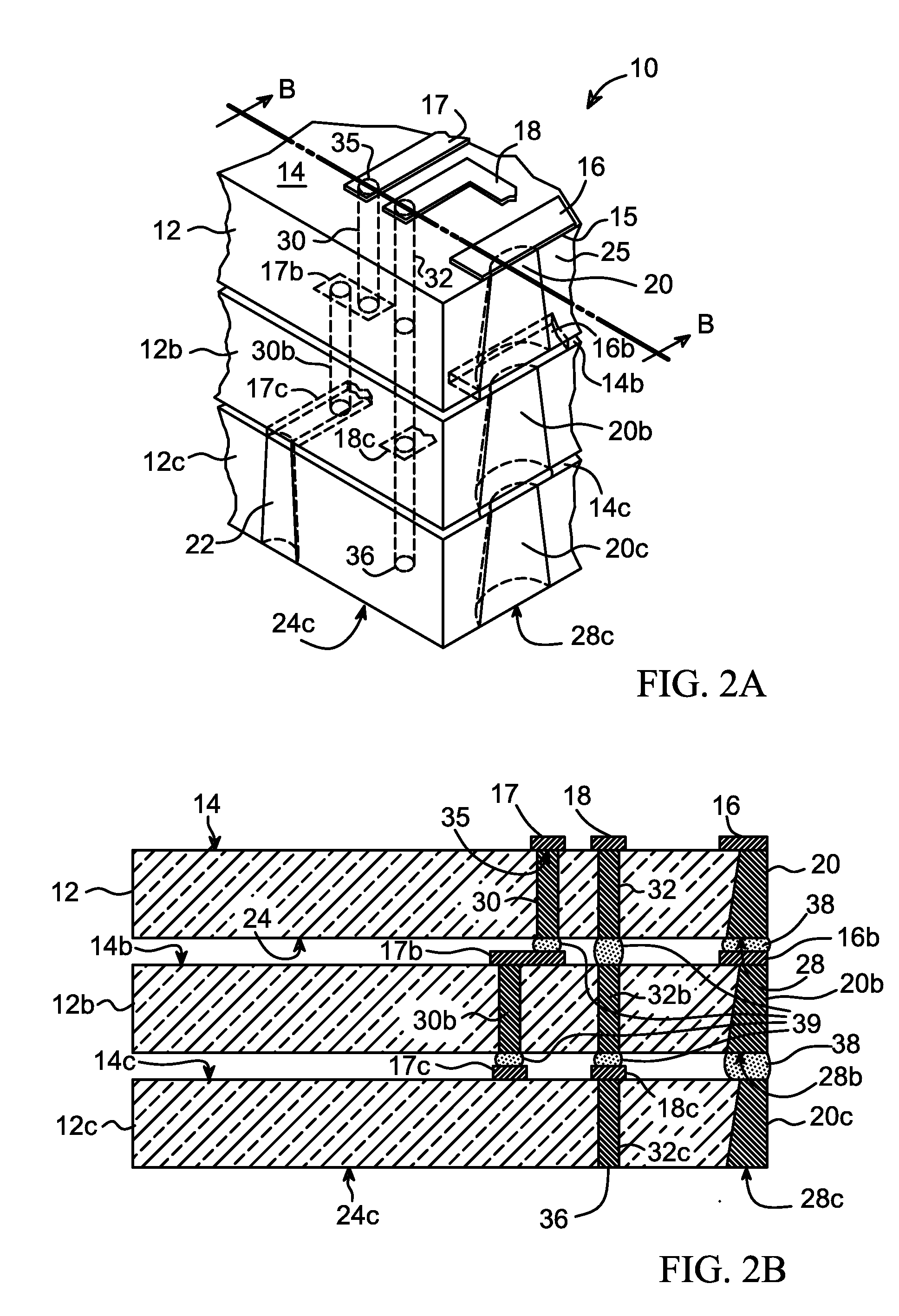Dual Interconnection in Stacked Memory and Controller Module
a controller module and dual structure technology, applied in the direction of semiconductor devices, semiconductor/solid-state device details, electrical apparatus, etc., can solve the problems of limiting the overall speed of operation of a multi-chip circuit, the transmission delay of the extended signal path between horizontally mounted chips becomes a significant factor in limiting the speed of operation of the multi-chip circuit, and the speed of the conventional construction of multi-chip circuits. achieve the effect of improving the inspection and access of contacts, and improving the capacity
- Summary
- Abstract
- Description
- Claims
- Application Information
AI Technical Summary
Benefits of technology
Problems solved by technology
Method used
Image
Examples
embodiment 300
[0072]FIG. 6 depicts an embodiment 300 having four chips 130 stacked on a pin-grid type circuit board 340. The memory of each chip 130 is equivalent to the memory of the respective chips 120 of FIG. 1. However, through incorporating the design embodiments and features described herein, the chips 130 can be stacked, thereby achieving a more compact connection configuration that can have substantially the same capacity as the prior art memory module of FIG. 1. The pin grid configuration 300 of FIG. 6 is presented only as one alternate embodiment by which a more compact chip stack can be coupled to a motherboard or other electronic assembly component.
Compact Memory and Controller Modules Through Stacking with Dual Interconnection:
embodiment 400
[0073]Another application can be appreciated by the embodiment 400 depicted in FIG. 7. The memory chips 130 of FIG. 7 are fabricated with both ECs and TSVs, as described herein, and configured to segregate signals through these respective transmission paths, as further described herein. The chips 130 are electrically interconnected in a stack configuration 210 utilizing interconnection features taught in conjunction with FIGS. 2A-4B. The stacked memory chips 130 are mounted on top of a memory controller chip 420.
[0074]Significant advantages ensue from the design of the memory module 400 in FIG. 7, in comparison to the prior art designs. Electrical transmission of a digital signal may require the charging or discharging of a conductive path to certain requisite voltage levels. As a consequence, the clock speed of a memory controller is limited, at least in part, by the time it takes to charge or discharge a conductive path between the controller and a memory chip controlled by the me...
embodiment 450
[0075]FIG. 8 depicts an embodiment 450 similar to FIG. 7, but wherein stacked memory chips 130 are disposed on opposite sides of the memory controller 420, further reducing the maximum transmission distance between the controller and the most distal memory chips coupled to the memory module.
Method of Fabricating a Stacked Chip Module Incorporating Dual Interconnection:
[0076]FIG. 9 depicts a sequence of steps 500 that illustrate, by way of example, a design and fabrication process for manufacturing a semiconductor module comprising a stack of IC chips interconnected by ECs and TSVs, according to features described above. Throughout FIGS. 5-10, the terms “semiconductor module” and “IC stack” are used somewhat interchangeably, with specific application toward semiconductor modules such as FIGS. 6 and 7, in which a single stack of IC chips is coupled with a substrate, memory controller, or other electronic structure (e.g., elements 340, 420 in FIGS. 6, 7, 8). This specific scope of the ...
PUM
 Login to View More
Login to View More Abstract
Description
Claims
Application Information
 Login to View More
Login to View More - R&D
- Intellectual Property
- Life Sciences
- Materials
- Tech Scout
- Unparalleled Data Quality
- Higher Quality Content
- 60% Fewer Hallucinations
Browse by: Latest US Patents, China's latest patents, Technical Efficacy Thesaurus, Application Domain, Technology Topic, Popular Technical Reports.
© 2025 PatSnap. All rights reserved.Legal|Privacy policy|Modern Slavery Act Transparency Statement|Sitemap|About US| Contact US: help@patsnap.com



